How Italy Won the West
Cheap, violent, and badly dubbed, Spaghetti Westerns were revolutionary
In the dusty hills of Spain’s Tabernas Desert -- a place that looks more like the American southwest than the actual American southwest -- a small group of Italian film directors inadvertently changed cinema history.
Dismissed in the 1960s as low-budget knockoffs of a dying American film genre, Spaghetti Westerns left their fingerprints on everything that followed: the way films portray violence, the appeal of conflicted and flawed heroes, the extent to which soundtracks help drive stories, and the embrace of ambiguous storylines over clear-cut good vs. evil narratives.
It’s not always obvious, but if you erase the stories of the brooding, poncho-clad drifter squinting into the sun then you never get to The Godfather, Taxi Driver, Star Wars, Apocalypse Now, Mad Max, Gladiator, There Will Be Blood, or Once Upon a Time in Hollywood. On the small screen, say goodbye to The Sopranos, Breaking Bad, Game of Thrones.
Italian audiences still craved stories of gunslingers and outlaws, even as Hollywood was making fewer of them. Italian producers knew Spain’s deserts -- or, on a tighter budget, Sardinia, Lazio, or Abruzzo -- could pass for the American west, and that they could shoot fast and cheap.
And just like that, the decade-long, cinema-changing run of Spaghetti Westerns began.
John Wayne to Tony Soprano
In their heyday between the 1930s and 1950s, classical U.S. westerns had a winning formula: moral, law-abiding good guys in white hats who triumphed over the dirty, scheming bad guys in black hats. Think John Wayne in Stagecoach or Gary Cooper in High Noon.
Violence in the classical westerns was bloodless and quick, and the music was orchestral with vague symphonic ups and downs.
Compare that to Spaghetti Westerns, which introduced gritty anti-heroes: greedy, violent, conflicted drifters or gunslingers who paved the way for modern protagonists from Han Solo and Mad Max to Tony Soprano and Walter White.
Another innovation was the use of sudden and extreme closeups -- eyes, hands, a brow, a facial twitch --stretched out, increasing tension before a burst of action. The method became a visual shorthand for suspense.
Or the brutal and un-sanitized violence of the Italian version of the western genre that inspired the restaurant assassination of Sollozzo and McCluskey in The Godfather, Star Wars’ cantina shootout scene, or the drawn-out and tense bowling alley climax in There Will Be Blood.
Or look at Ennio Morricone’s haunting scores1 that drive their film’s story with symphonic grandeur combined with the use of unconventional instruments like whistling, church bells, ocarinas, whip cracks, trumpets, electric guitars, and chants. It had a kind of hypnotic power. As much as any actor on the screen, a Morricone soundtrack was a character in its own right, just as the music in Francis Ford Coppola’s Apocalypse Now, Quentin Tarrantino’s Once Upon a Time in Hollywood, and many, many others.
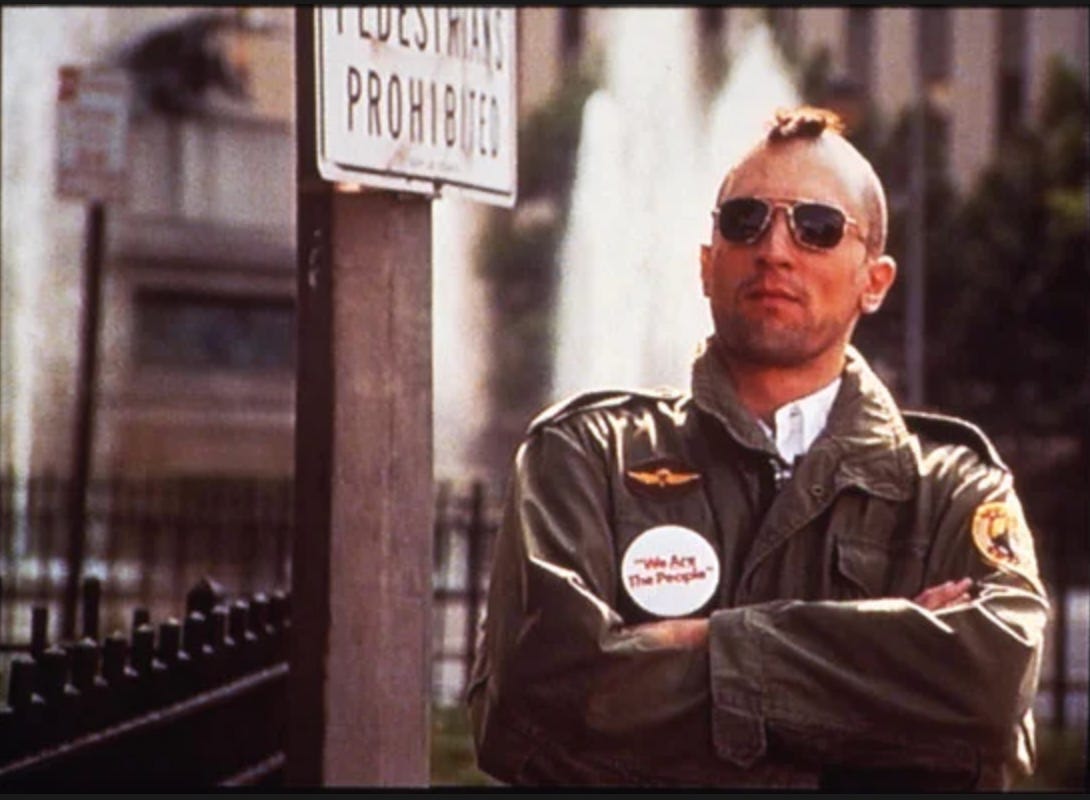
The block of marble
In the early 1960s, Clint Eastwood was the third most important character on Rawhide, American television’s fourth most popular western series. He had one of the cliché roles that was on the way out.
But Sergio Leone, then a little-known Roman assistant director, saw something special in Eastwood.
“He had two facial expressions,” Leone said years later, “one with the hat, one without it.” But the minimalism that might have been a limitation for Hollywood casting directors was full of possibility for Leone, a blank slate that could be filled with menace and ambiguity.
“It’s said that Michelangelo saw the block of marble and could picture the sculpture of David, and that all he had to do was remove the excess,” Leone was fond of saying. “Well, I looked at Clint Eastwood and I could picture the block of marble.”
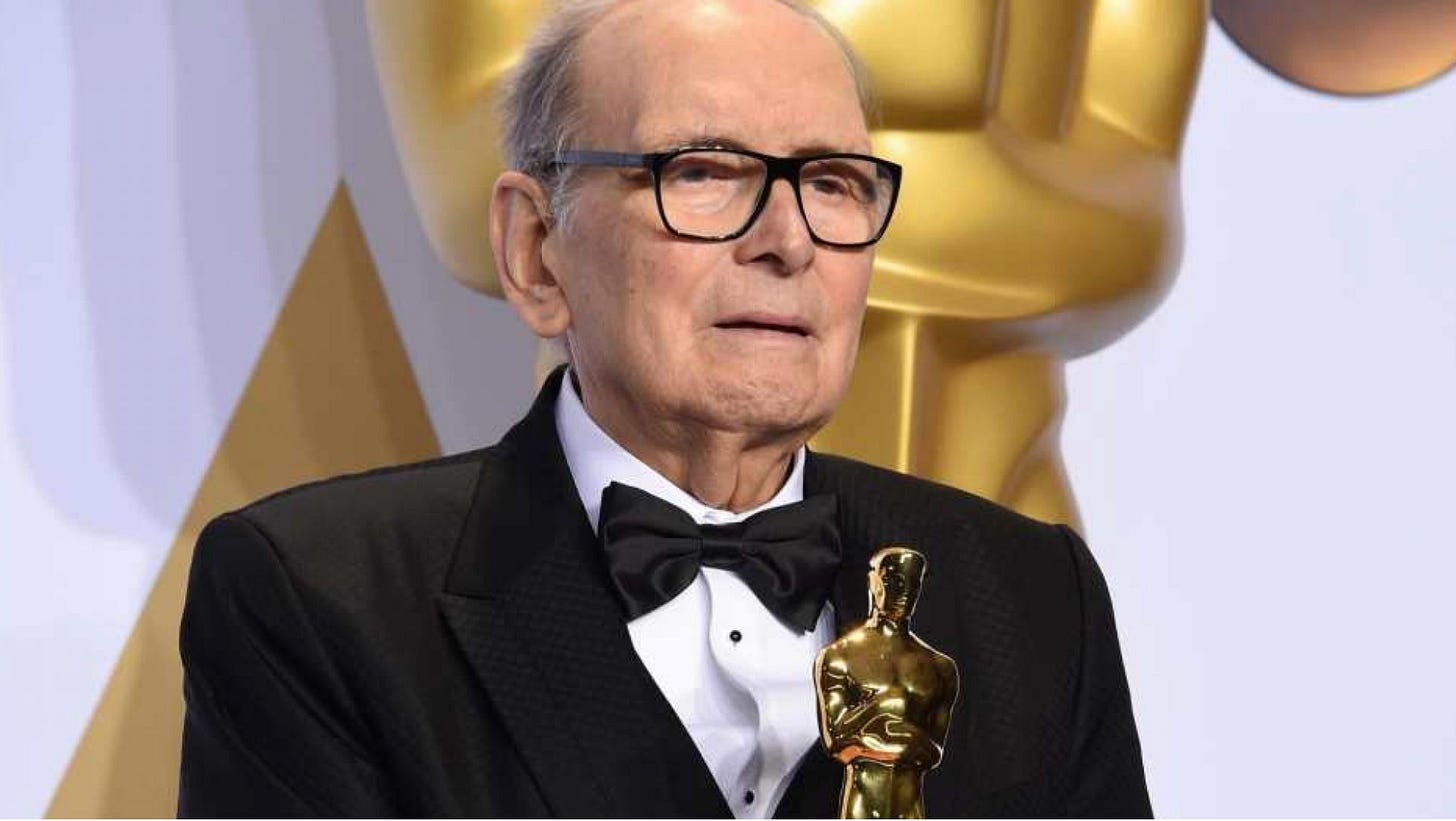
Leone and Eastwood collaborated on three films that came to define the genre: A Fistful of Dollars, For A Few Dollars More, and The Good, the Bad, and the Ugly. Eastwood was a gunslinger who was neither a virtuous sheriff nor a scheming villain. He was a drifter who killed for profit and wasn’t motivated by honor -- but who viewers couldn’t turn away from.
By the time they were done, the squint and the poncho became icons of Spaghetti Westerns and of antiheroes to come.
“A Fistful of Dollars wasn’t just the birth of the Spaghetti Western,” Tarantino said on the 50th anniversary of the film’s release. “It’s the birth of the genre of action cinema as it’s come to be known.”
📌 And another thing
There’s a scene in Quentin Tarantino’s 2012 film Django Unchained -- itself a Spaghetti Western homage -- that stands out to devotees of the genre. Leading man Jamie Foxx, cigarillo in hand, leans against a bar when an older, distinguished man -- bearded, white-gloves -- steps up to order a Tequila. He turns to Foxx and asks in accented English, “What’s your name?”
“Django,” Foxx replies.
“Can you spell it?”
Foxx obliges, then adds, “The ‘D’ is silent.”
“I know,” the man says.
The scene is unforgettable to Spaghetti Western fans because the man is Franco Nero, the original Django, the ultra-violent, widowed gunslinger in Sergio Corbucci’s 1966 cult classic. The film was banned in some countries because of its graphic violence. Yet it became a sensation in Italy and across Europe, spawning around 30 unofficial sequels (Nero only appeared in one).
Corbucci, often referred to as “the other Sergio,” is second to only Sergio Leone among Spaghetti Western directors, and is Nero is probably the genre’s second most iconic leading man after Clint Eastwood.
In my years at The Hollywood Reporter, I crossed paths with Nero several times. Once, in Capri, ahead of the European premiere of Django Unchained, we spoke for a Q&A that appeared in the magazine. What struck me most was how, nearly 50 years after he first dragged his coffin across the screen, Nero still bristled with pride at the character he created, and Foxx was reprising.
“Both are men of few words; both are very skilled with guns,” Nero told me. “They are men of action.”
Would the Djangos become friends if they could somehow meet?
“I became friends with Jamie Foxx in real life. But I’m not sure the Djangos would have gotten along.”
And if they fought?
Nero didn’t hesitate: “I think I would have won,” he said.
It’s not the original rendition, but I love the Danish National Symphony’s rendition of Ennio Morricone’s The Good, the Bad, and the Ugly theme.


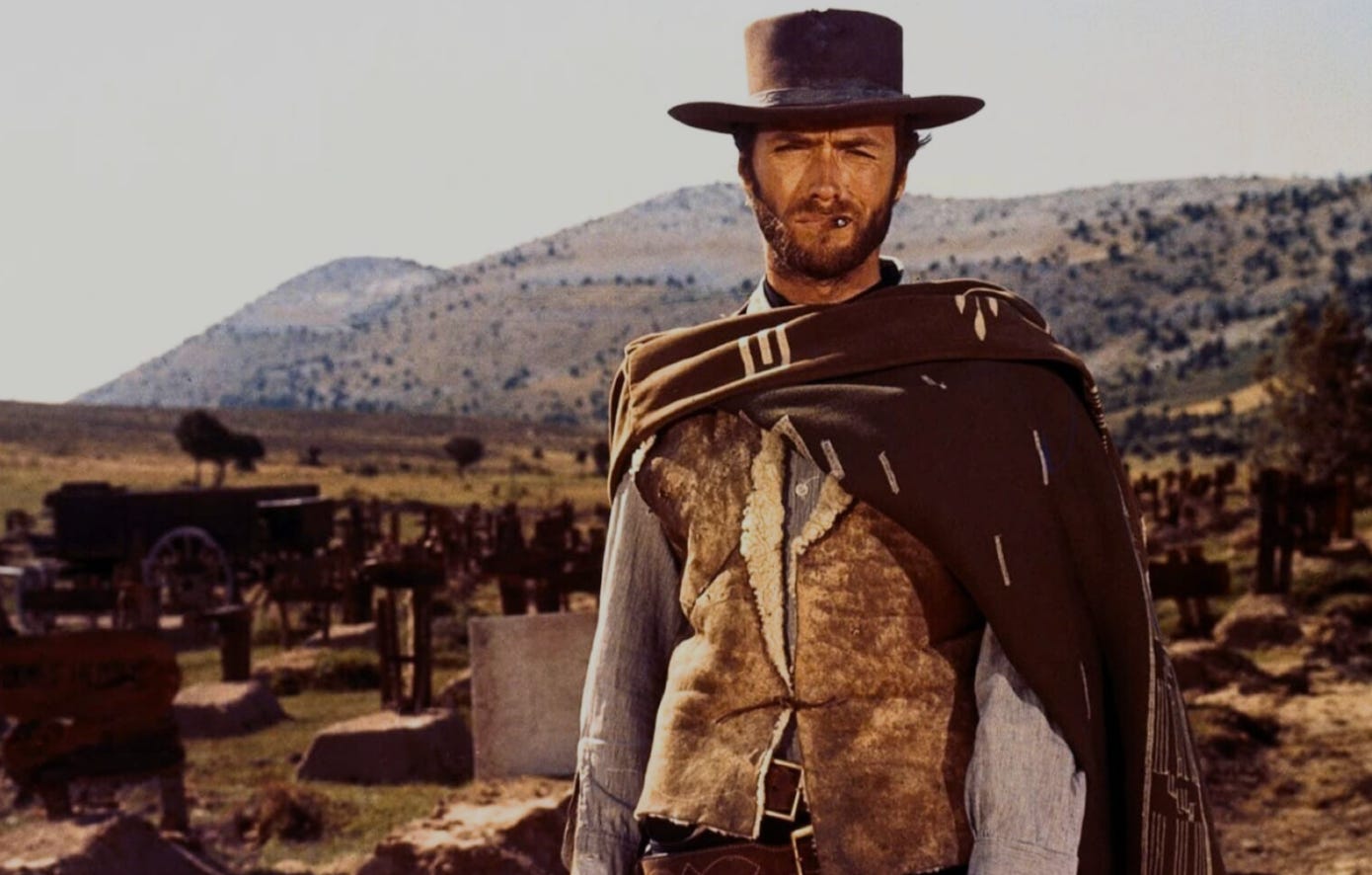
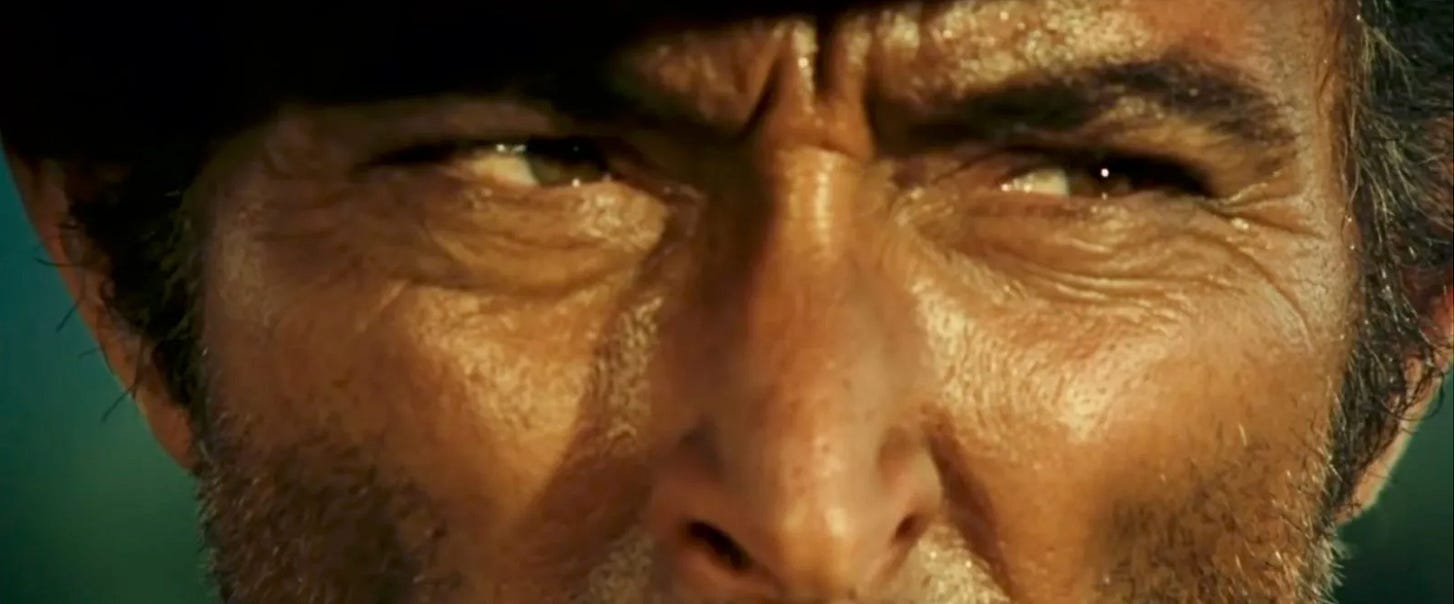
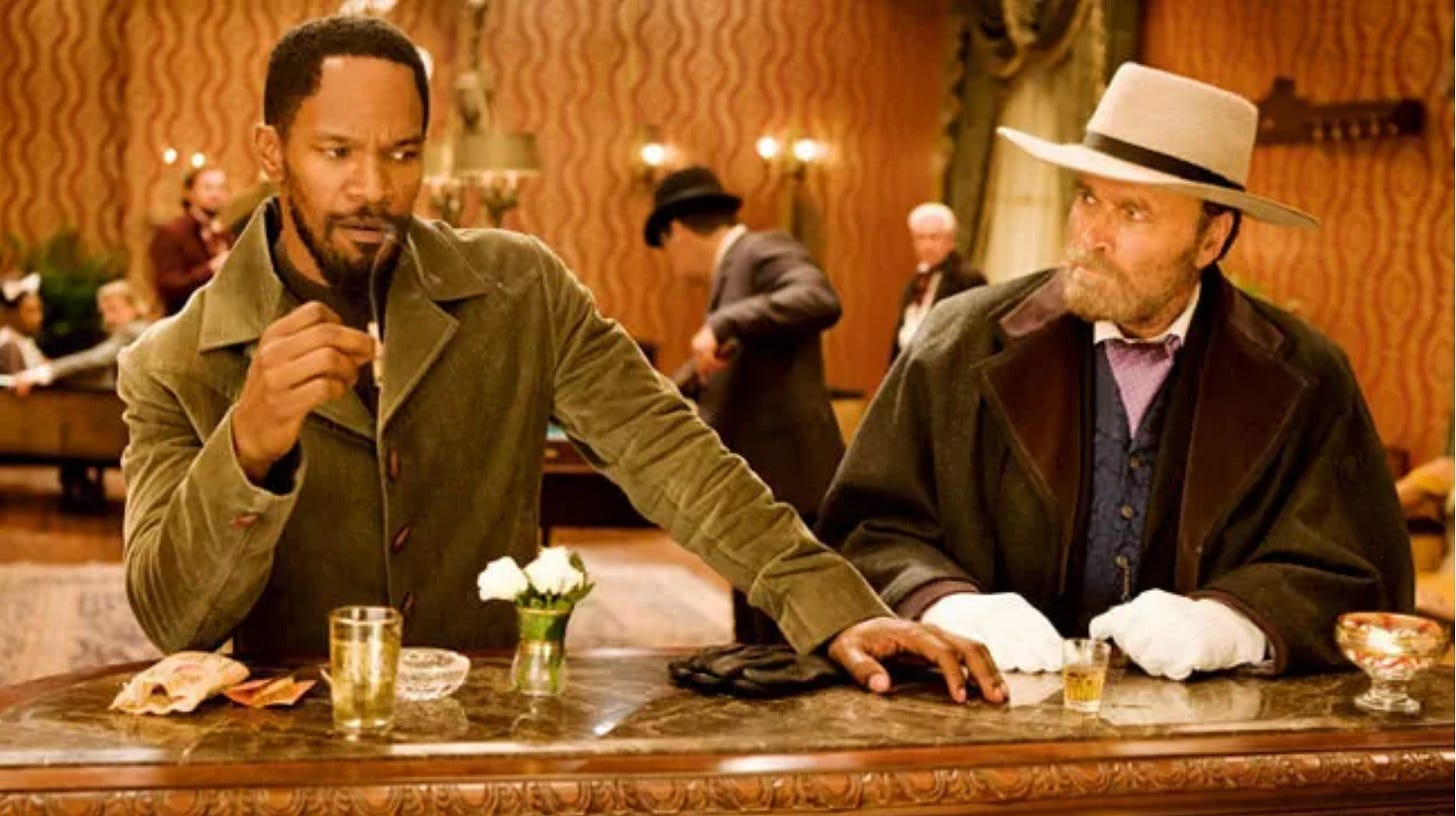
Sergio Leone mi ricorda mio papà, grandissimo appassionato dei suoi spaghetti western, di cui conosceva ogni battuta. Picture this: paesino di provincia, cinema e due adolescenti al loro primo appuntamento che vanno a vedere lo stesso film di Leone…per ben due volte, e che finiscono per passare i successivi cinquant’anni insieme. Grazie d’avermi fatta sorridere e un po’ commuovere.
Your stories are definitely food for thought! Wow!